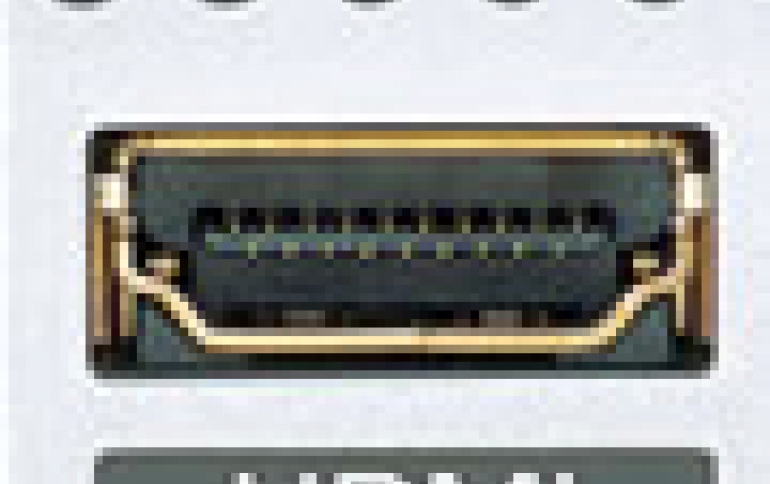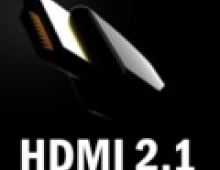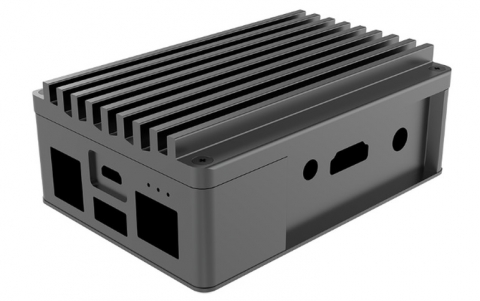
How To Connect Your PC to an HDTV With HDMI
The choice of how you connect your PC to your TV is critical
to optimizing your experience. Assuming your PC?s graphics
card supports it, HDMI, or High Definition Multimedia
Interface, is one of the best ways to connect a PC to your
HDTV.
HDMI is a single cable that carries all-digital,
uncompressed video at resolutions up to 1080p, as well as
uncompressed or compressed digital audio signals. While HDMI
is common in consumer electronics devices like the Xbox 360,
DVD and Blu-ray players, since 2007, we have seen more and
more PCs roll out with HDMI support - especially in the
laptop and notebook area. All major graphics card
manufacturers also offer cards with HDMI.
If your PC or laptop and TV are relatively recent, making an HDMI connection is a simple. After making the connection, you may have to adjust the resolution settings to ensure the PC's output on the TV is making the best use of the available space.
If you connect your laptops or netbooks to an HDTV through HDMI, full HD video and audio will be sent to the TV set. However, if you decide to insert an AV receiver into the mix, say to handle surround sound, things may get more complicated. While HDMI can provide an digital, high definition audio and video experience, it can also be tricky to implement with older devices, components, displays and AV receivers.
The most common challenge we see when integrating older PCs or HD displays via HDMI has been the so-called "handshake issue."
This is because an important part of the HDMI specification involves a content protection scheme called HDCP (high-bandwidth digital copy protection) in which the source device checks the receiving device for an authentication key. If all is well, they 'shake hands' and get on with the business of your content. If you've ever watched a DVD on an Xbox 360, you may have briefly seen a message on screen that reads "Secure HDCP link established." after you've hit play. That means you've had a successful handshake.
While connecting an Xbox or Blu-ray player to your HDTV via HDMI is fairly straightforward, doing so with a PC involves many more variables. Your graphics card may have an older driver, for instance, or the firmware for your display may be out of date. Many older devices such as graphics cards, displays and receivers did not implement HDCP correctly (or at all, in some cases). If your setup involves an AV receiver or projector, you have introduced additional components into the path that also have to successfully implement HDCP in order to create a secure path between the source (your PC) and the display (your HDTV).
With the release of Windows 7 and more products supporting HDMI 1.3, it seems as though firmware and driver updates have helped resolve many of the handshake issues. However, Mike Garcen, one of MIcrosoft's Windows Entertainment and Connected Home MVPs and the man behind the HTPC enthusiast site Missing Remote, described some of the top symptoms of an HDMI handshake issue are for an HTPC running Windows 7.
Here's what he reported as the most commonly reported symptoms of a handshake issue he still sees today:
* A black screen when the primary video display is no longer available. For example, you've switched to another input, and then back to the HDMI input, or turned the TV off and left the HTPC on, or the HTPC is resuming from sleep.
* Loss of audio is an issue we've seen on some older ATI cards, but in my testing of Windows 7 SP1 beta, this seems to be resolved.
* For HTPCs running Intel HD Graphics, we see reports that the screen resolution is lower when the primary video display is no longer available. This includes input switching, TV on\off and resuming from sleep.
If you think you're experiencing a handshake issue using HDMI, there are a few things Mike recommends trying:
* Power down everything and then restart. This restarts the HDCP verification process. That means powering down your PC, the display and any components you may have integrated between them.
* Try a different HDMI cable (ideally of a different length) than the one giving you an issue. Timing is a critical component of the HDCP process, and sometimes changing the cable can help resolve an issue. Note, also, that if your display supports up to 1080p high definition, ensure that you are using a High Speed HDMI cable, designed for 1080p resolution and beyond. If you are using a Standard HDMI cable, the best you can do is 720p.
* Start checking drivers and firmware: It's time to start looking at the drivers and firmware for the cards and components in your set-up. Are they up to date? Do they all support the correct version of HDMI? Do some research and check forums like those on Missing Remote, the Green Button or the AV Science forums.
At the heart of most HDCP issues, you'll find you can remedy the issue with a driver or firmware upgrade, or else identify and replace the non-HDCP compliant device in your chain. You may also want to check out a product like the HDMI detective from Gefen, a small box whose job it is to keep your HTPC and display in synch even when you go about switching inputs. Otherwise, you'll have look at other connection options instead of HDMI
The good news, Mike reports, is that as HDMI has matured and more manufacturers have gotten HDCP down, the number of handshake issues seems to be on the decline. Mike writes:
"Many of the early HDCP timing issues were due to the AVR and TV firmware and early drivers. Most of those issues have been resolved with (HDMI v.) 1.3."
The specification for version 1.4 of HDMI was released in mid-2009, and brings with it some promising features, including 3D over HDMI and an added Ethernet data channel. While cautiously optimistic, Mike characterizes HDMI 1.4 as "extremely new to the HTPC world."
While uncompressed, digital audio has been supported from the beginning with HDMI, getting an HTPC to work with HDMI in delivering full HD audio can be challenging. Check out Missing Remote's guide on bit streaming HDMI HD audio from an HTPC setup. For background on why full HD audio has been tricky for HTPCs, see Anandtech?s write-up here.
If your PC or laptop and TV are relatively recent, making an HDMI connection is a simple. After making the connection, you may have to adjust the resolution settings to ensure the PC's output on the TV is making the best use of the available space.
If you connect your laptops or netbooks to an HDTV through HDMI, full HD video and audio will be sent to the TV set. However, if you decide to insert an AV receiver into the mix, say to handle surround sound, things may get more complicated. While HDMI can provide an digital, high definition audio and video experience, it can also be tricky to implement with older devices, components, displays and AV receivers.
The most common challenge we see when integrating older PCs or HD displays via HDMI has been the so-called "handshake issue."
This is because an important part of the HDMI specification involves a content protection scheme called HDCP (high-bandwidth digital copy protection) in which the source device checks the receiving device for an authentication key. If all is well, they 'shake hands' and get on with the business of your content. If you've ever watched a DVD on an Xbox 360, you may have briefly seen a message on screen that reads "Secure HDCP link established." after you've hit play. That means you've had a successful handshake.
While connecting an Xbox or Blu-ray player to your HDTV via HDMI is fairly straightforward, doing so with a PC involves many more variables. Your graphics card may have an older driver, for instance, or the firmware for your display may be out of date. Many older devices such as graphics cards, displays and receivers did not implement HDCP correctly (or at all, in some cases). If your setup involves an AV receiver or projector, you have introduced additional components into the path that also have to successfully implement HDCP in order to create a secure path between the source (your PC) and the display (your HDTV).
With the release of Windows 7 and more products supporting HDMI 1.3, it seems as though firmware and driver updates have helped resolve many of the handshake issues. However, Mike Garcen, one of MIcrosoft's Windows Entertainment and Connected Home MVPs and the man behind the HTPC enthusiast site Missing Remote, described some of the top symptoms of an HDMI handshake issue are for an HTPC running Windows 7.
Here's what he reported as the most commonly reported symptoms of a handshake issue he still sees today:
* A black screen when the primary video display is no longer available. For example, you've switched to another input, and then back to the HDMI input, or turned the TV off and left the HTPC on, or the HTPC is resuming from sleep.
* Loss of audio is an issue we've seen on some older ATI cards, but in my testing of Windows 7 SP1 beta, this seems to be resolved.
* For HTPCs running Intel HD Graphics, we see reports that the screen resolution is lower when the primary video display is no longer available. This includes input switching, TV on\off and resuming from sleep.
If you think you're experiencing a handshake issue using HDMI, there are a few things Mike recommends trying:
* Power down everything and then restart. This restarts the HDCP verification process. That means powering down your PC, the display and any components you may have integrated between them.
* Try a different HDMI cable (ideally of a different length) than the one giving you an issue. Timing is a critical component of the HDCP process, and sometimes changing the cable can help resolve an issue. Note, also, that if your display supports up to 1080p high definition, ensure that you are using a High Speed HDMI cable, designed for 1080p resolution and beyond. If you are using a Standard HDMI cable, the best you can do is 720p.
* Start checking drivers and firmware: It's time to start looking at the drivers and firmware for the cards and components in your set-up. Are they up to date? Do they all support the correct version of HDMI? Do some research and check forums like those on Missing Remote, the Green Button or the AV Science forums.
At the heart of most HDCP issues, you'll find you can remedy the issue with a driver or firmware upgrade, or else identify and replace the non-HDCP compliant device in your chain. You may also want to check out a product like the HDMI detective from Gefen, a small box whose job it is to keep your HTPC and display in synch even when you go about switching inputs. Otherwise, you'll have look at other connection options instead of HDMI
The good news, Mike reports, is that as HDMI has matured and more manufacturers have gotten HDCP down, the number of handshake issues seems to be on the decline. Mike writes:
"Many of the early HDCP timing issues were due to the AVR and TV firmware and early drivers. Most of those issues have been resolved with (HDMI v.) 1.3."
The specification for version 1.4 of HDMI was released in mid-2009, and brings with it some promising features, including 3D over HDMI and an added Ethernet data channel. While cautiously optimistic, Mike characterizes HDMI 1.4 as "extremely new to the HTPC world."
While uncompressed, digital audio has been supported from the beginning with HDMI, getting an HTPC to work with HDMI in delivering full HD audio can be challenging. Check out Missing Remote's guide on bit streaming HDMI HD audio from an HTPC setup. For background on why full HD audio has been tricky for HTPCs, see Anandtech?s write-up here.


















